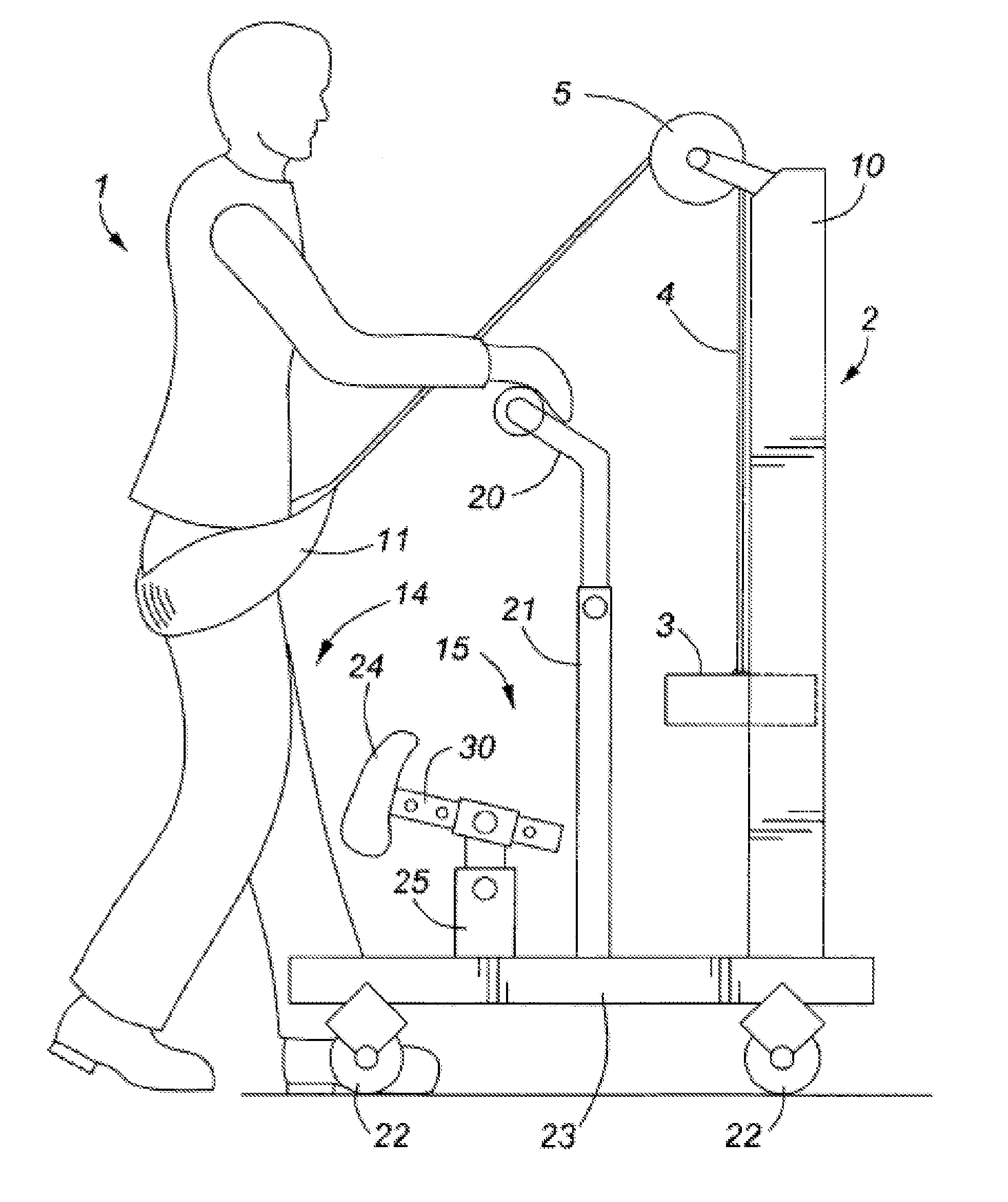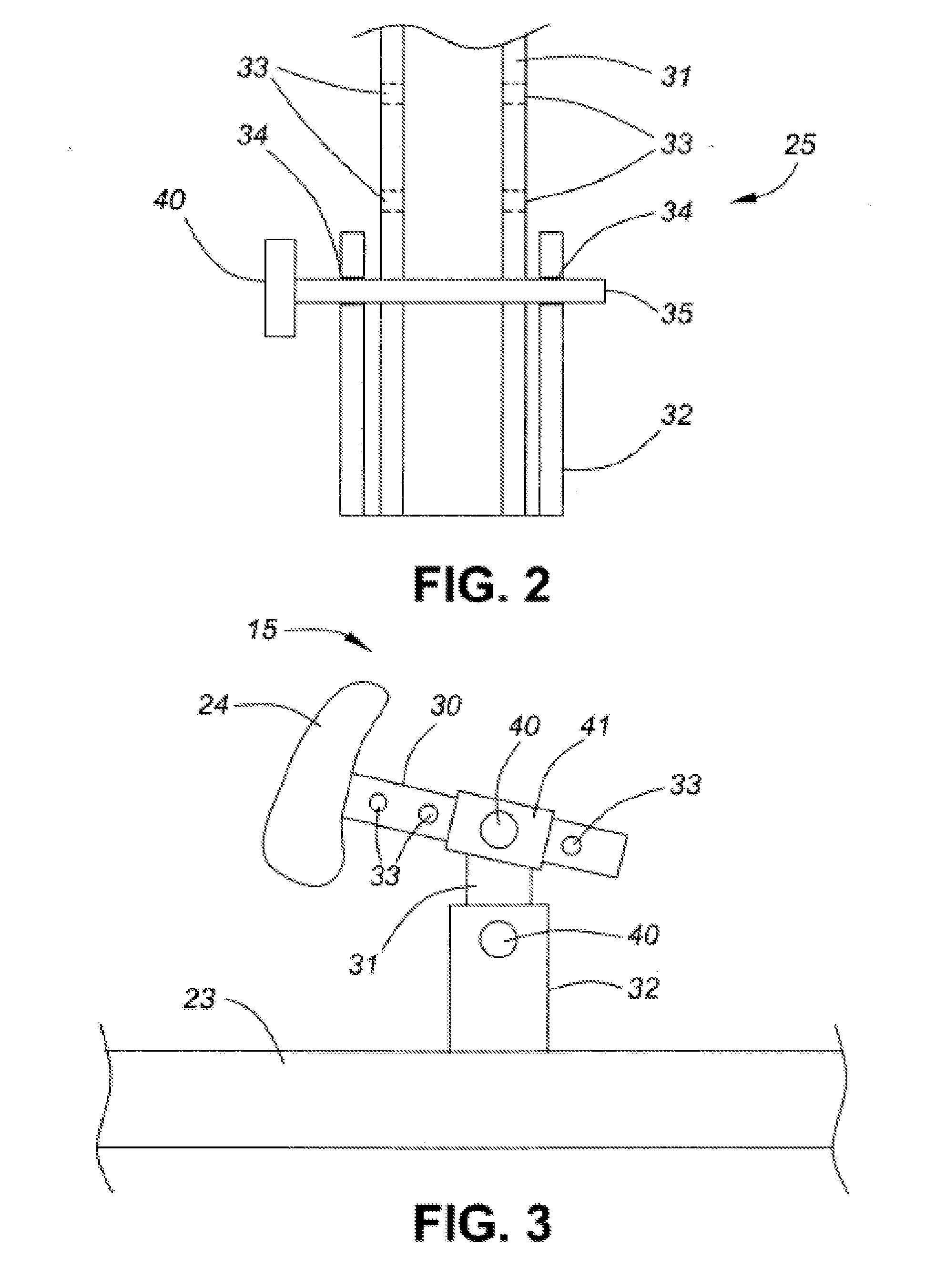Apparatus for assisting a person to stand and walk
a technology for standing and walking, applied in the direction of sport apparatus, gymnastic exercise, cardiovascular exercise devices, etc., can solve the problems of severe paresis of the lower extremities, inability to practice tasks needed, and inability to achieve the desired freedom of movemen
- Summary
- Abstract
- Description
- Claims
- Application Information
AI Technical Summary
Benefits of technology
Problems solved by technology
Method used
Image
Examples
Embodiment Construction
[0023] In order to show progress in the development of the movement / action, the subject should practice efficiently and sufficiently. The question remains of how to provide efficient and sufficient training for standing up from sitting to someone who cannot initiate such movement on his / her own. What is needed is an apparatus that supports and enables such movement in a safe manner i.e. a sit-to-stand assisting device whose main function is to enable the coordinative sequence of efforts associated with the standing up movement even when the training person is otherwise not able to stand up. The repeated practice of standing and squatting would then gradually develop the strength, balance and coordination associated with the skill of standing.
[0024]FIG. 1 depicts a person 1 being assisted to stand by apparatus 2 (also referred to as a sit-to-stand apparatus). There, a counterbalancing weight 3 is coupled at an end of cable 4 that is received by a pulley 5 coupled to a vertical membe...
PUM
 Login to View More
Login to View More Abstract
Description
Claims
Application Information
 Login to View More
Login to View More - R&D
- Intellectual Property
- Life Sciences
- Materials
- Tech Scout
- Unparalleled Data Quality
- Higher Quality Content
- 60% Fewer Hallucinations
Browse by: Latest US Patents, China's latest patents, Technical Efficacy Thesaurus, Application Domain, Technology Topic, Popular Technical Reports.
© 2025 PatSnap. All rights reserved.Legal|Privacy policy|Modern Slavery Act Transparency Statement|Sitemap|About US| Contact US: help@patsnap.com



